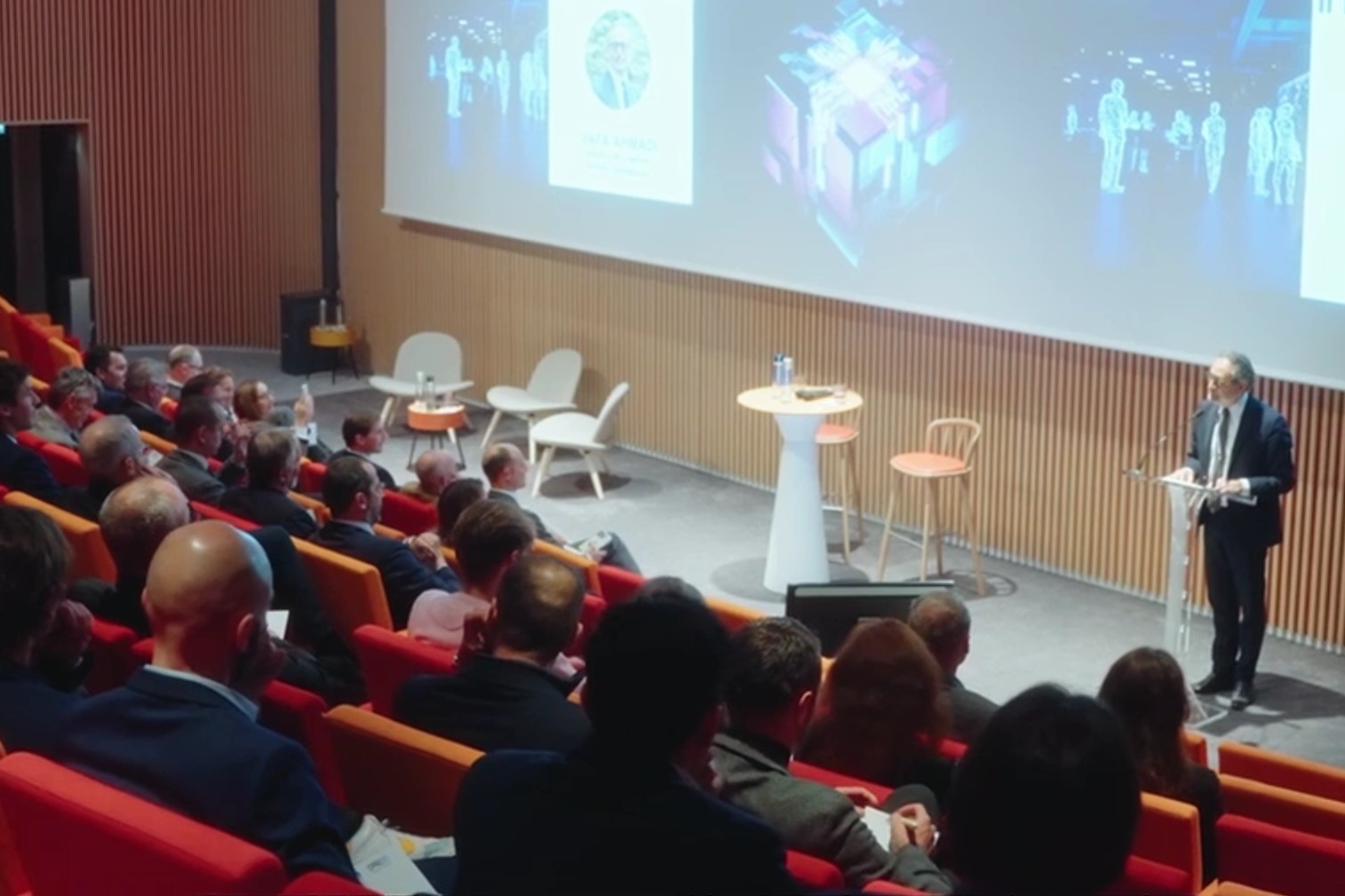Artificial Intelligence: a new cycle for a new fund
"Artificial Intelligence is a transformative force with immense potential to impact both our personal and professional lives," declared Vafa Ahmadi, Head of Thematic Equity Management at CPRAM, at a recent conference on the topic. Despite the widespread excitement about AI, CPRAM's experts — joined by Xavier Perret, Director of Microsoft Azure France — emphasized that AI is no mere trend. Instead, they perceive it as the start of a significant innovation cycle, presenting large opportunities for well-positioned companies.
Published on 17 December 2024

Artificial intelligence has gained public attention over the past two years, with the names of key companies behind its development becoming increasingly familiar. Beyond the buzz, CPRAM identifies AI as a groundbreaking long-term investment trend that is still in its infancy. By focusing on the core AI ecosystem and its critical components, investors can leverage vast opportunities.
AI: a developing narrative
For CPRAM, tracking technological breakthroughs is nothing new. Over the past eight years, Wesley Lebeau, Deputy Head of Thematic Equity Management, and Guillaume Uettwiller, Thematic Equity Portfolio Manager, have managed the disruptive strategy. They identified the disruptive potential of AI, which they see not as an incremental digital innovation but as the beginning of a new technological cycle. "Technological cycles typically last 10 to 15 years," explains Wesley Lebeau, "as we saw with the rise of smartphones over the past decade. Each cycle often leads to market expansion, doubling or tripling in size."
To illustrate how early we are in AI’s development, Xavier Perret pointed out that we stand at the threshold of the technology’s third major breakthrough. "The first breakthrough came with conversational models, the second with models incorporating memory, and now we’re entering a new phase—models capable of reasoning," he explained. These advancements are powered by major industry players whose efforts are accelerating the field's maturity. This rapid development, despite AI’s cutting-edge nature, makes it a particularly appealing investment, with late 2024 considered an ideal time to launch a dedicated fund.
Key drivers of acceleration
CPRAM’s long-term investment outlook aligns with rapid advances in AI innovation and adoption, which further bolster the sector's appeal.
A critical driver is the rapid expansion of infrastructure supporting AI systems. "The global scaling of AI infrastructure is well underway, especially in data centers," noted Xavier Perret. "Microsoft, for instance, operates 300 data centers globally, making it the largest player in this space." Currently, an additional 100 data centers are under construction worldwide. Advances in computing hardware, such as GPUs, are exponentially increasing the computational power available to AI systems. "Modernizing data centers unlocks incredible potential," added Guillaume Uettwiller.
"When combined with more sophisticated AI models and growing data availability, everything aligns to amplify AI's power and adoption." Users are showing an increasing appetite for AI. Within two months of its launch, ChatGPT attracted 100 million weekly users, a figure that has since doubled. Companies are also adopting AI at scale. "We’re witnessing a third wave of AI adoption," said Xavier Perret. "Even research-focused professions, which were previously skeptical, are now embracing AI." Microsoft, for example, recently signed a contract to deploy 50,000 Co-Pilot licenses, expected to boost employee productivity by 10%.
Finally, AI is becoming more cost-effective. In just 18 months, ChatGPT reduced its operational costs—measured in tokens—by a factor of twelve. "This is thanks to infrastructure optimization," explained Xavier Perret.
A comprehensive approach to artificial intelligence
CPRAM believes we are entering a new technological era. "Digitalization used to focus on disseminating information. Now, it enables us to act on that information," noted Guillaume Uettwiller. Together with Wesley Lebeau, they have developed an investment strategy centered on the entire AI ecosystem. "We target companies where AI significantly contributes to current or future business growth—this impact must be measurable by the market," explained Wesley Lebeau. A unique feature of CPRAM’s approach is its collaboration with MSCI to create an exclusive AI index. "This partnership provides a reliable benchmark and a tailored index that accurately reflects the dynamics of the AI sector," said Wesley Lebeau.
"We’re confident the infrastructure cycle will continue, at least until 2026," explained Guillaume Uettwiller. He noted that $1 trillion worth of infrastructure is currently installed globally, with an additional $1 trillion required by 2030 for modernization.
"Unlike our competitors, we focus on 50 companies whose growth trajectories are being significantly shaped by AI," said Wesley Lebeau.
Sustained growth, not a bubble
Despite the excitement surrounding AI, CPRAM dismisses concerns about a speculative bubble. Stock market performance remains supported by strong fundamentals, with companies regularly revising earnings upward. Valuations have remained reasonable, with no indication of the irrational exuberance that characterized the dot-com bubble of the early 2000s.
"We’re witnessing a durable trend, underpinned by infrastructure spending and the long-term monetization potential of AI", concluded Guillaume Uettwiller and Wesley Lebeau.